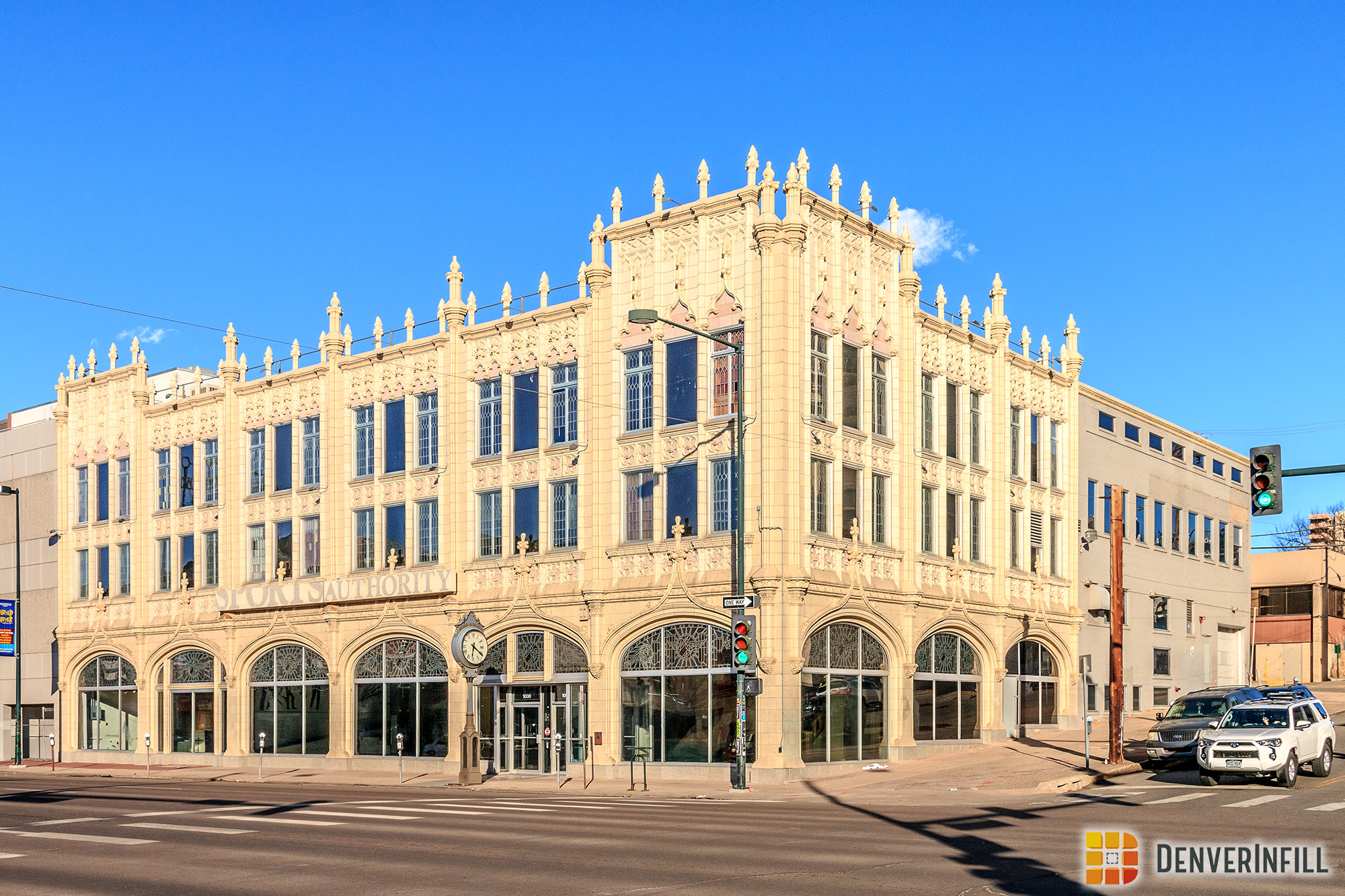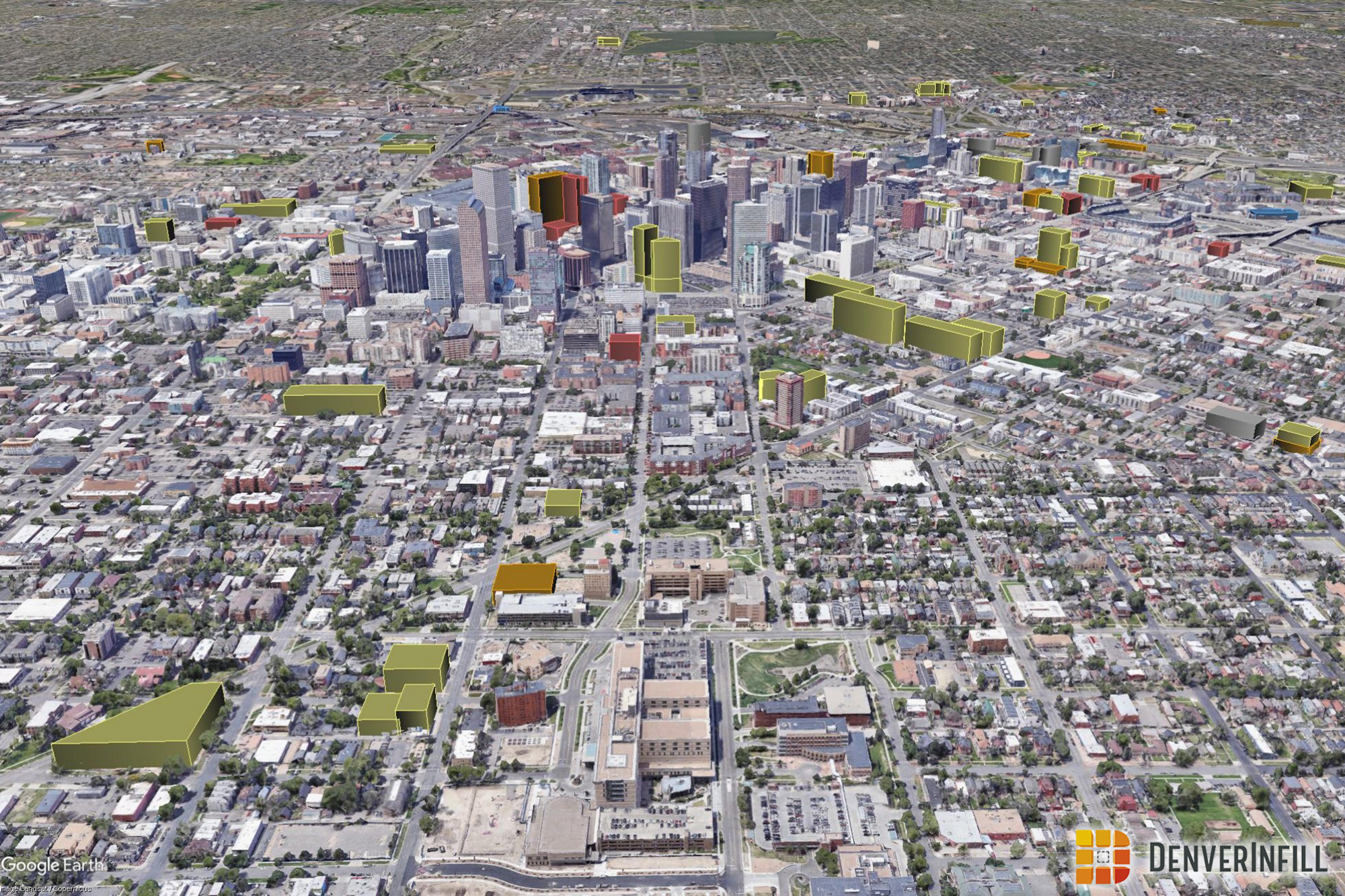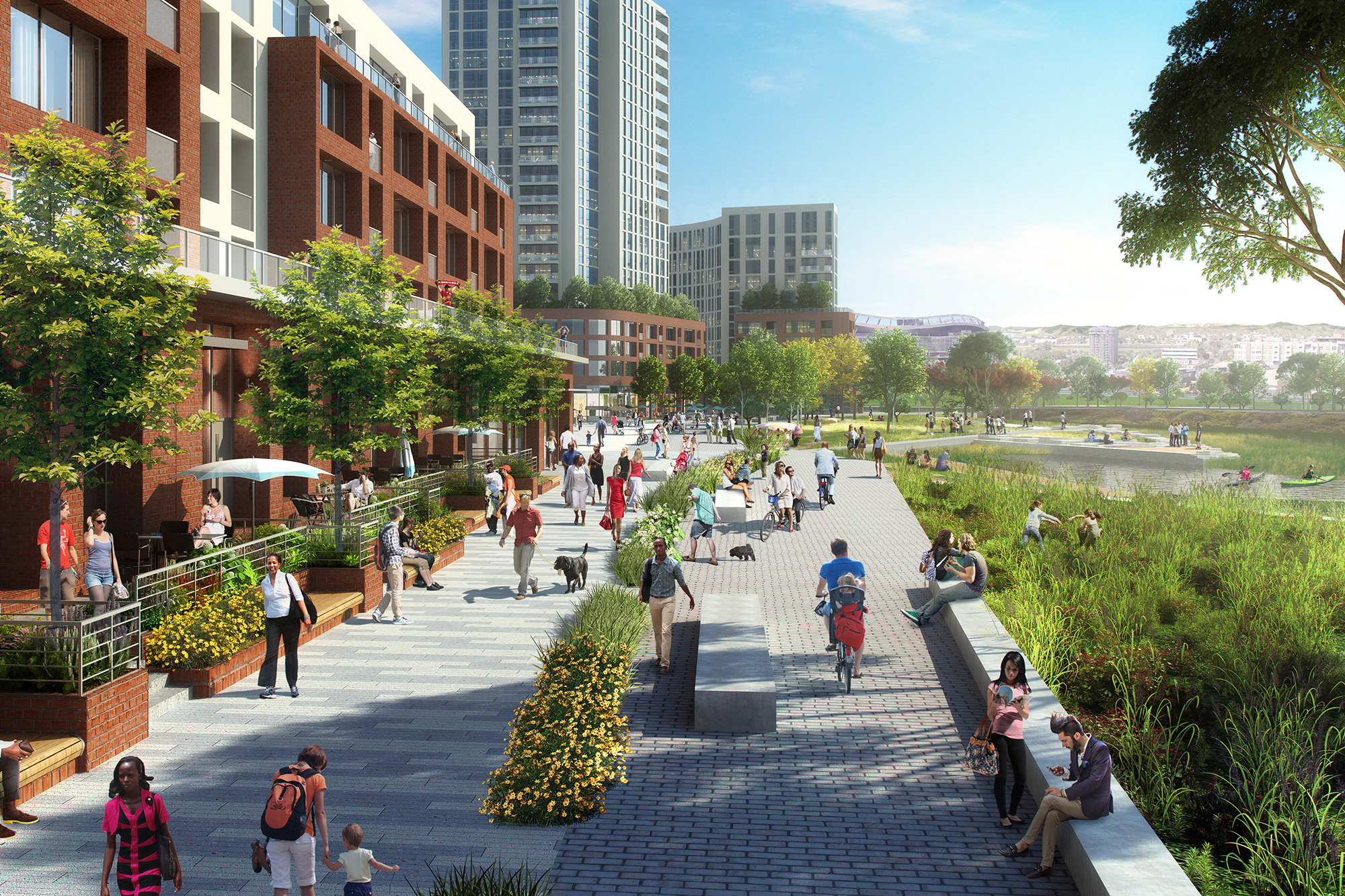Number 4 in our list of Denver’s Top 10 Urbanism Achievements of the Aughts is the various progressive plans and policies the city has adopted in the past decade. OK, I know this one may not be as exciting as some of the others on the list, but it is just as important in the long run.
The reason why we find ourselves with urban development issues like buildings that are out-of-scale with their surrounding context or wide high-volume one-way streets or boring blank walls along whole blocks of Downtown is because the policies and plans we had in place at the time those things were constructed allowed, encouraged, or even required that those things occur. Change the policies, and you change the results you get.
For decades, Denver’s public rights-of-way have been under the control of the traffic engineers, because the only purpose of a street, after all, is to move the maximum number of motor vehicles from Point A to Point B as quickly as possible, right? Denver was not alone in this viewpoint, of course. Pretty much the whole country went on a wild automobile orgy after World War II, ripping out historic neighborhoods to put in expressways, widening local streets in older areas to function as major arterials, tearing down buildings to put up parking lots, putting in double or even triple turn lanes at intersections and not bothering with cross-walks, designing new subdivisions with curvy and dead-end streets where nothing connects to anything and you have to drive everywhere to get anywhere, building new homes with a huge garage facing the street and with the dwelling hidden somewhere in the back… the list goes on. And then we wonder: why are we so alienated by our built environment?
Fortunately, the plans and policies that got us into this mess have been changing in Denver, and this past decade we made excellent progress on that front. The decade began with the completion of the new Denver Comprehensive Plan 2000 which established a broad vision and goals for the city. That was followed up in 2002 by Blueprint Denver, the city’s first-ever integrated land use and transportation plan that categorized all parts of the city into Areas of Change and Areas of Stability and focused on the mixing of land uses along with multi-modal streets. In 2005, the Downtown Multimodal Access Plan (DMAP) was adopted which identifies circulation patterns and routes in the Downtown area for all forms of transport and mobility, as well as cross-sections and streetscape designs for all of Downtown’s different street classifications.
The list goes on. Since 2005, the City of Denver has completed the Strategic Transportation Plan, Greenprint Denver, the Transit-Oriented Development (TOD) Strategic Plan, the Denver Living Streets initiative, and the Downtown Area Plan. And then there’s the new Denver Zoning Code which, while not quite complete yet, has been a massive—Herculean—effort over the past five years that will align our zoning regulations with all of our new land use, transportation, and urban design goals and policies.
Are any or all of these new plans and policies perfect? Hmmm… no. But what is important to recognize is that they are all fundamentally based on the same philosophies and principles of urbanism that created Denver’s original urban districts and neighborhoods that we so treasure today, and 180-degrees opposite the automobile-oriented and modernist philosophies and principles that created most of the mess we’re trying to fix. For that reason, Denver’s bundle of new “old urbanism” plans and policies ranks Number 4 on our Top 10 list.











It was interesting to watch how certain cities across the nation handled the New Urbanism movement over the past decade. I recall seeing plans for developments in Houston, Las Vegas or Phoenix that were pitched as urban but were really nothing more than suburbia 2.0. I think Denver has made a concerted effort to move past the automobile and start reclaiming the city for its human inhabitants. It’s recently completed and planned developments are far ahead of the ‘New Urbanism’ fad and feel like real city creation. Less can be said about the surrounding suburbs 🙁 Ken, astute points as usual but I take issue with the title. Published 50 years ago, an article titled Progressive Plans and Policies would have outlined how we should all live in lush suburbia and commute in our efficient automobiles to Corbu style office parks. Urban and Communal living arrangements are as old as humanity itself; returning to them is the opposite of progressive. I’ll cede the point that the title is apt for today’s feelings and political jargon. However, if we had conserved Urbanism as an absolute our cities wouldn’t be the mess that they currently are, and there would be no need to progress back to their original function.
Ralph, you’re right about the word “progressive” in that it clearly is a term that is relative to its day. But somehow “Regressive Plans and Policies” just doesn’t sound right. 🙂 Great comments.
The suburban development trends that have arisen in light of New Urbanism are interesting too. Cinderella City in Englewood, and Belmar (fka Villa Italia) in Lakewood are two pretty decent examples of efforts to move beyond the mall mentality.
Equally remarkable, metropolitan Denver has some of the highest suburbann residential densities in the nation. This is despite not have the obvious geographic barriers of a San Francisco, a Manhattan, or a Vail, despite the fact that we have fairly thin commuter rail at this point, and despite the fact that most of metropolitian Denver was build in the post-automobile era.
Water supply limitations account for part of this (in Douglas County, in particular, residential water supply limits have dramatically increased tap fees and limited development). Water supply limitations have also had a major impact on landscaping in new developments. But, there are large areas of undeveloped land that are still in Adams and Arapahoe County to the East that could have been overtaken by sprawl, but weren’t, despite fairly developer friendly county governments, low land prices, the existence of transferrable water rights that could have been purchased from irrigated farmers in the area, and a lack of geographical barriers. One of the not very well understood questions is why metropolitian Denver doesn’t look more like metropolitian Los Angeles and San Diego (which are also arid).
The city and the mayor talk a good game, but they seem loathe to put money behind the rhetoric. For example, the south side of first avenue along the country club was recently resurfaced, but the city did nothing to improve the portion of the cherry creek bike path which runs along the sidewalk. This is probably the most overcrowded and inadequate stretch of the path, but there was no effort to widen or smooth the bike path along with the street. Also, greenprint denver says they will not widen a roadway’s footprint, except when they do- ie. the reconfiguration of south broadway. All of the plans published by the city will have to be backed up with public funding if they are to amount to anything. I know we are in a recession, without a lot of money to throw around, but building bike lanes, separated paths and public plazas, as NYC is doing, would be a lot cheaper and go a lot further towards improving urban quality of life, than spending 10’s of millions of dollars to widen roads and overhaul highway interchanges.
This entry and some of the comments made me think about an old film from 1939 from the Regional Planning Association of America called “The City”. It basically tells America to forget about the cities and start building the suburbs. If anyone is interested in watching it, it is available on the Internet Archive in two parts:
http://www.archive.org/details/CityTheP1939
http://www.archive.org/details/CityTheP1939_2